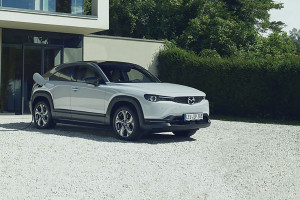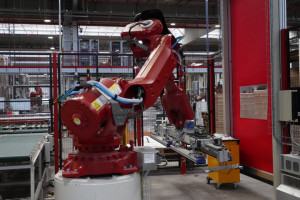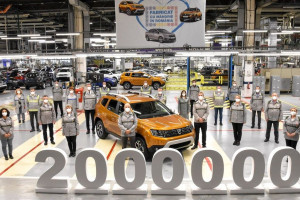Engie Romania has concluded a partnership, at national level, with Mazda Romania to promote electric mobility. Through the partnership, Engie meets the needs of Mazda customers who purchase, in the following 12 months, a Mazda MX-30 car from the partner network of authorized dealers and facilitates for them the installation, at their homes or in any other location, of an Elvi electric charging station, produced by EVBox, global leader in the production of charging stations for electric vehicles.
News
The location of the robotic machining cell is in Sélestat, Alsace, France. Two production facilities of the internationally active kitchen furniture manufacturer Schmidt are currently located in Sélestat. The name Schmidt has stood for particularly modern production technology and perfect quality since 1934 (founded in Türkismühle, Germany) and with over 1500 employees. German perfection and French design guarantee affordable furniture for the highest demands. The manufacturer of the robot processing cell is the Zimmer Group from Rheinau in Germany. On its way towards Industry 4.0, the Zimmer Group has evolved from a classic component supplier to a system provider and has thus produced an entire robotic cell at once.
IBM has unveiled the world’s first 2 nm chip, built at its R&D facility in Albany, New York. The test chip features gate-all-around transistors built with IBM’s nanosheet technology. Overall, IBM says the new process technology will enable 2 nm chips to achieve 45% higher performance or 75% lower power consumption than state-of-the art 7 nm chips in production today.
The Duster numbered 2,000,000 has come off the production line of the Dacia Plant in central Mioveni this month, the car manufacturer informs.
According to a release from Dacia, the car is a limited edition Duster Advantage ECO-G 100 - with mixed petrol/LNG fuelling, made for a client in Romania.
After 6 consecutive months of gains, energy commodities fell 0,5% in April. Prices are up 26,2% since December 2020 and 170,4% from a year earlier. Non-energy prices rose 2,7% in April (+42,1% from April 2020).
MISUMI, a global manufacturer and leading provider of mechanical components and indirect materials for special machine construction and assembly automation, has commissioned SSI SCHAEFER to implement a new logistics center in Frankfurt/Main. The distribution center with a capacity for 450,000 items on more than 10,000 m2 of storage area was built in several stages. Core elements of the system are an automated shuttle warehouse, a four-storied rack system, ergonomic work stations connected via a conveying system and the logistics software WAMAS®.
Phantom Auto, a California-based startup focusing on remote vehicle operation, has struck a deal to provide logistics equipment heavyweight Mitsubishi Logisnext Co. with software that enables forklifts to be operated remotely from thousands of miles away.
A unit of Mitsubishi Heavy Industries Ltd., Kyoto-based Mitsubishi Logisnext is the third-biggest company in the $45 billion-plus global market for forklifts. Via their tie-up, Bessemer Venture Partners-backed Phantom Auto and Mitsubishi will offer forklifts that can rove around a warehouse in California, controlled by workers sitting at a desk a continent away.






